HOME | ABOUT US | MEDIA KIT | CONTACT US | INQUIRE
HOME | ABOUT US | MEDIA KIT | CONTACT US | INQUIRE
This Is What You Get When Excellence is the Goal
The fourth installment of Ingram’s Icons of Education produced an odd twist: Each year since the program began in 2009 to recognize the best of what education in this region has to offer, we’ve cast a spotlight on nine highly qualified administrators, researchers and classroom instructors.
We didn’t plan it this way for 2012, but fully a third of this year’s honorees launched their careers out of a shared interest in animals: A veterinary school dean, a molecular biologist and a professor of equine studies who emphasizes championship-caliber horsemanship. Maybe that says something about the emergence of an animal-health corridor in the region; maybe it’s pure coincidence.
Regardless, they join others in this impressive lineup who represent K-12 education, medical research and instruction in human health, campus administration, hands-on instruction in history and in raising the next generation of teachers, and magazine journalism.
No matter what path they took in their own careers, they all ended at a common destination: Excellence. Please join us in congratulating Ingram’s 2012 Icons of Education.
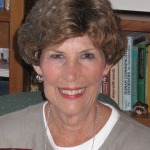 Linda Edwards
Linda Edwards
University of Missouri–Kansas City
Quickly scanning half a century in education—including 33 years with the School of Education at the University of Missouri–Kansas City—Linda Edwards recalls no particular moment that validated her choice of careers. Rather, she says, a series of discoveries led to her own a-ha! moment.
“It was when I realized—and not just a moment, but after a series of painful moments—that we were not addressing in our teacher preparations the main problem—we were pretty much ignoring it,” she says. Specifically, the kinds of students being recruited to become future teachers, and the instruction they were receiving. On both ends, the school was falling short of meeting the needs of surrounding urban school districts. “We needed to stop, focus on the real problem: the achievement gap in the urban core.”
Under her guidance as dean, the school committed to doing more than educating teachers for urban-district careers; it sought out prospective students from those districts, students who understood the culture and challenges of those schools. That kind of vision earned her the UM System’s Manuel T. Pacheco Academic Leadership Award and the UMKC School of Education Outstanding Professor Award. She also has been a Kellogg Fellow finalist, and she’s earned best practices awards from state and federal education departments. Civic duty as well, is one of her hallmarks, serving on various non-profit boards, including the Gillis Center and Children’s Place.
She retired in 2009, but went back into the classroom to aid Southwest High School’s college-prep curriculum before that school’s mission changed. But even in a district as troubled as Kansas City’s she says, she sees rays of hope. “I was heartened,” she says, “by the motivation in kids and their parents who wanted something more than they were getting.”
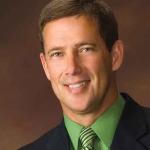 Jim Hinson
Jim Hinson
Independence School District
Most of the students whose first day as freshman at Van Horn High School in 2008 are seniors today, just months away from graduation and the future that awaits. It is a future brightened considerably by Jim Hinson, superintendent of the Independence School District, and those who waged the battle to wrest control of that school and six others from a dysfunctional Kansas City public system in 2007.
“It was that support and the knowledge that we were doing what was best for students that propelled us to support the annexation,” Hinson recalls. “When you take what might be considered a risk, I never view it as a gamble when kids will benefit.”
Hindsight—and academic metrics—show us that “it is very clear that it was the right move,” Hinson says, especially given the improvement in the way those students view their education: “Many have been buoyed by their success in school, and will be the first in their family to enter college,” he beams.
That praiseworthy accomplishment is one of many realized by nearly 14,000 students in the Independence district under Hinson’s leadership since 2002. The Kansas City school’s annexation, in part, made him the choice for Superintendent of the Year by the Missouri Association of School Administrators in 2007.
More than personal accolades, though, Hinson basks in the recognition that the district has received in recent years. For three years running, the district has earned Distinction in Performance honors, the highest given by the state, for performance in test scores, graduation rate, attendance and more.
That’s not bad, but Hinson has discovered greater rewards: “When a student looks at you and smiles because you have reached out to meet their needs,” he says, “you realize why you are in this business.”
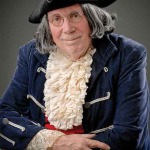 Fred Krebs
Fred Krebs
Johnson County Community College
Fred Krebs is a character. Really: He’s Benjamin Franklin. He’s Galileo. And Kit Carson, Abe Lincoln or William Allen White.
Whatever the role he’s called to play, this Johnson County Community College professor dons the battle gear of a black-belt educator and wades into the fray of teaching history. His use of period costumes and character portrayals, more than mere measurements of his commitment to the task, speak volumes about the energy and passion he brings to it: “Have car, will travel … have personality, will split,” he jests.
The audience response to seeing a Ben Franklin two centuries after his demise? “Almost all of the time, there is a lively discussion that takes place about these figures’ ideas and what has transpired because of their influence on history,” Krebs says. But his are characters with distinctions: “I’m not a re-enactor. My costumes are a tool to create the atmosphere and to give people reasons to think about historical ideas within the humanities. It’s a tool to encourage people to read more books and think about the significance of these characters.”
Citing the intellectual influence of the late James Seaver, a professor of ancient history at University of Kansas, Krebs acts out his belief “that people need to have a lifetime of reading and discussing great books. It’s vital that we find ways to get people to read major works and be involved in mentoring and discussion
so they can learn how to think about significance.”
That’s not an idle academic exercise or reading books for the sake of reading. Instead, it speaks to something fundamental about what kind of nation we will be, he says, “The core of the liberal arts defines what our society needs to develop citizenship in a democratic republic.”
“I get a lot of students saying ‘I’ve never written an essay,’ or ‘History has always been difficult for me, but you’ve taught me how to organize my thoughts.’ I teach them how to think, speak, write and talk about something so that later on they may want to read more about it; now they can and have a new understanding about it.”
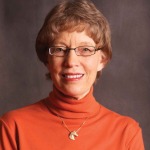 Gayle Lampe
Gayle Lampe
William Woods University
She grew up in Kentucky, home of endless white rail fences and champion thoroughbreds. Of course Gayle Lampe would be raised in a culture of horsemanship. Well, not exactly: “I just loved horses as a girl, but my parents did not,” she recalls. “My father was a circuit court judge, my mother a homemaker, and neither had ever ridden.” But a friend owned a pony, and “I thought it was so cool. All I ever wanted to do was ride,” Lampe says.
She never let go of that love, which led her to equestrian studies at Stevens College in Columbia, at the time, the biggest academic program of its kind. After graduating in equestrian science, she landed at nearby William Woods University in Fulton, Mo. She wanted to build a program from the ground up.
Fast-forward 43 years. After decades spent securing donations of high-value animals (tax-write offs for donors), finagling program funds from the administration and finding ways to finance the facilities, her vision is reality: “When I came, we had 21 stalls; now we have 157,” she beams. “The more horses, the merrier.” Lampe is a two-time world champion in the 5-gaited class, and eight-time reserve champion, honors that attract better students, better donations of animals and more funds.
Whence that passion? “I just love horses,” she says. “Either you love them or you don’t, and if you have it in you, it becomes a part of you.” It comes down to connecting with another being. “You can’t cheat on a horse,” she says. “If you didn’t do your homework last night, that horse will tattle-tale on you. If you didn’t train it right, exercise it, clean its stall, it will let you know about it.”
From doing things right, day in and day out, students learn “patience, responsibility, time management,” she says. “And you get the biggest thrill of your life when you have a good ride. Not every ride is good, but there’s nothing else like it when it is good.”
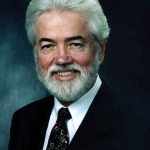 Don Ranly
Don Ranly
University of Missouri
“A good magazine,” Don Ranly says, “is like a good friend: You’re always happy to see it arrive. You stop whatever it is you are doing. You always receive a gift of good news and surprises.”
For nearly three decades at the University of Missouri’s school of journalism, Ranly’s students thus came to embrace magazines as good friends. And as academic imperatives: “I always told my students that if I ever saw them pass a magazine rack (in a grocery store, for example) without stopping, I would flunk them.”
This is a man whose own personal commitment to inquisitiveness—not teaching, but learning—spanned 23 years and seven institutions. Instruction in philosophy, theology, psychology, speech and journalism culminated with this doctorate in the latter at MU in 1976. And he stayed in Columbia to teach, leading
MU’s magazine sequence for nearly 30 years before retirement.
That gave him a chance to provide intellectual seed capital for many a career. As professor emeritus at MU, Ranly still lectures, drawing on changes in both technology and demographics to freshen his own outlook on magazine content. “Our students have been dealing with on-line for years with our weekly magazine,” he says. “Until I was forced to write a chapter on on-line writing, I had not realized all of the differences. Interestingly, I think knowing how to write on-line can make one a better print writer.”
The focus of instruction these days, he says, should be on producing convergent journalists—“convergence” is a word you hear often at MU’s J-School—and teaching skillful use of social media.
And yet letters—a file drawer filled with them—brim with thanks for what he taught students about good, old-fashioned ink-on-glossy print magazines. “So many of them say they never thought they would work in these areas until I turned them on to them,” Ranly says. “And surprise! They love what they do!”
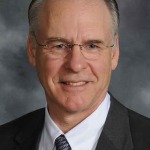 Ralph Richardson
Ralph Richardson
Kansas State University
After leaving the Army Veterinary Corps in ‘72, Ralph Richardson knew he needed to brush up on clinical skills before setting up his practice. He stumbled upon a clinical internship at Purdue University and had his first taste of teaching students. Change of plans: The private practice never materialized.
Instead, his life would turn around veterinary instruction, and at an elevated level. His use of naturally occurring models for cancers in cats and dogs is at the nexus of medical treatments for animals and humans.
Thirty years after leaving K-State, he came back as dean of the college of veterinary medicine. He leads a program vital to the animal health corridor that runs 250 miles eastward to MU.
“Helping to grow the College of Veterinary Medicine into a world-class college, being involved with the transition of federal laboratories to Manhattan, seeing a public health program emerge, being involved in international programs, and engaged with the animal health and nutrition companies associated with the Animal Health Corridor creates an environment of unprecedented opportunities,” he says. “It’s an exciting place.”
Administrative duties in that sphere are but one of the great rewards Richardson has derived through veterinary medicine. The others are from teaching as well as from his work in clinical studies, helping create the veterinary specialty of oncology, and from breakthroughs as a researcher, “knowing that animals are getting better treatment for cancer and, more importantly, humans with cancer have benefitted from the applied research that I got to participate in while I was at Purdue.”
His greatest reward is seeing his students succeed. Richardson recalls challenging one student to craft his own diagnostic and treatment plans, rather than have the professor do it. “He jumped at that responsibility,” Richardson says, “and went on to change career paths from swine practitioner to becoming a board-certified veterinary oncologist”—and eventually taking a leadership role for a company in the region’s animal-health corridor.
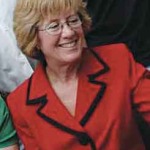 Virginia Rider
Virginia Rider
Pittsburg State University
Her father was a university professor in Hawaii. Her own teaching career began at Tufts University in Boston, half an ocean and a full continent away. She’s lived in Africa, Europe and many parts of the United States. But Virginia Rider didn’t realize true career fulfillment until a decade ago, when she arrived in southeast Kansas.
“One might think it is strange to end up in Pittsburg, Kansas,” she says. “But for the first time in my career, I am truly happy.”
She also finds immense rewards in small class sizes—“I know all of the students by name no later than the second week of class,” she says—and in her ability to influence and participate in the success of students moving into graduate programs and professional schools. Rider specializes in molecular biology, a field she was drawn into by a matter of scale when it came to her initial interest in equine reproduction: “The research questions I was most interested in answering require molecular approaches (i.e. gene regulation) and such studies were not practical in horses,” she says.
Her career took her to Arizona State, Cambridge University in England and Tufts before something in her own DNA exerted a pull. Her parents had come out of the Midwest, she said, “and no doubt we children were raised with Midwest values.” So despite the fabulous talent in major cities, she found that “the East Coast life style was a strain,” she said, “and when an opportunity arose to move to UMKC, I was glad to relocate to Kansas City.” Her work there led her to Pittsburg, and professional contentment. “I interface with health care professionals to help educate our students in ways that would not be possible in a large city,” Rider says. “And I am appreciated by the university administration. There are few people who have the pleasure of knowing they are valued during their lifetime.”
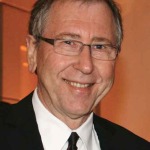 Val Stella
Val Stella
University of Kansas
If a broad world view is prerequisite to effective university-level research, good luck finding someone who can match Valentino Stella’s. His parents were
Italians who immigrated—to Australia. He came to the United States and studied under the late Takeru Higuchi, the first-generation son of Japanese immigrants, and he freely quotes African American writer Zora Neale Hurston’s observation that “research is formalized curiosity, it is poking and a prying with a purpose.”
Stella says he always knew he wanted to be a teacher, inspired in part by high school physics instructor who “showed me how you could break complex information down to its essence to make learning both interesting, achievable and fun,” Stella says. The rewards, he said, “are too numerous to elaborate on.”
“The personal satisfaction one derives from seeing the light bulb go on in students in the classroom or in the laboratory is a true high that is hard to describe.” At KU, Stella carries on the research legacy of Higuchi, who was credited with developing time-released drug technologies that changed not only medicine, but academia and commerce. In that mold, Stella’s work at KU led to the founding of CyDex Pharmaceuticals and other companies that specialize in drug-delivery platforms. He says he thrives on helping KU realize its potential in commercializing technologies from the efforts of its faculty and staff. Continued success with such ventures, he says, will help the region “realize what a gold mine KU can be in its effort to create high-paying jobs in our community.”
And he finds pure satisfaction in giving direction to young minds: “Your life and the lives of so many people are positively affected by that one decision to provide a bright and enthusiastic student an opportunity to explore—to poke and pry with a purpose.”
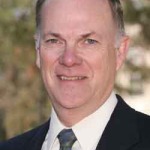 George Wilson
George Wilson
University of Central Missouri
Like twin benevolent viruses, Central Missouri State University and Warrensburg bit George Wilson—hard—not long after he arrived in town nearly 40 years ago. “I went with the expectation of staying a couple of years and moving on,” Wilson recalls, “but it was such a great community.” And not just for its location or its appeal as a place to raise a family. “What kept me here was a culture of concern about students,” he says—and a shared commitment to a quality education.
That’s how the foundation is laid for a 39-year career at a single institution. It took Wilson a little longer than he’d first anticipated, but he is indeed moving on: At the end of this academic year, he’ll retire as provost and chief learning officer for a campus serving nearly 12,000 students. The impression he leaves behind is truly indelible: Most recently, Wilson has been responsible for academic programs and support services throughout the university’s range of academic colleges, as well as the library, UCM’s graduate and sponsored research programs, operations of the admissions and registrar’s offices, academic advising and enrichment, international programs—oh, and distance learning operations.
Much of his career has been spent in strategic planning as the campus and annual enrollments have grown while nearly 10 full freshman-to-senior cohorts of students have passed through the university. “I hadn’t thought of it in those terms,” says the educator trained in economics. Rather, he viewed that time through a prism ground from relationships.
“The one thing that stayed constant through the years,” Wilson says, “was the concern about the welfare of our students.” The biggest change about the place, he says, was the expectation that faculty would engage in research, creative activity and continuing education across their entire ranks.
With retirement beckoning, the community still has its hooks set—Wilson and his wife of 43 years, Leah, are going to stay in the area, he says: “We’ll do some traveling, but I hope to still get to teach now and then.”